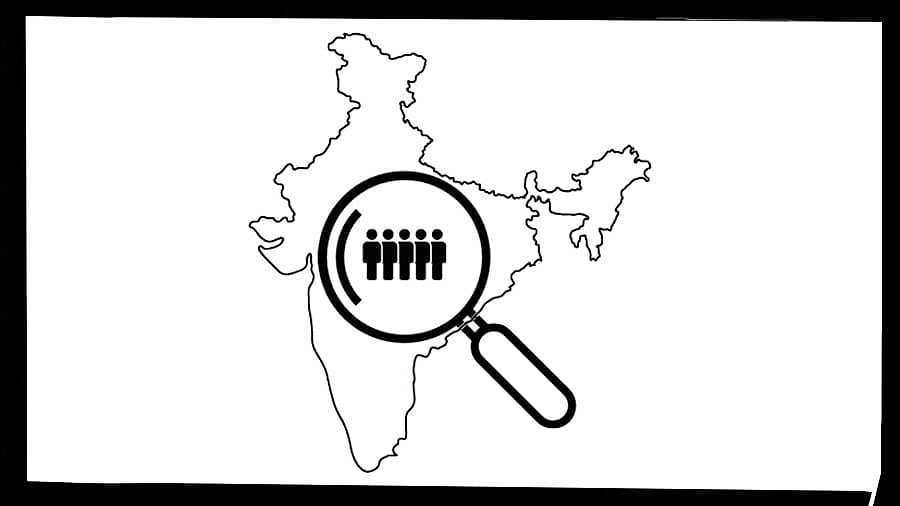
Miheer Karandikar
Delimitation, the process of redrawing electoral constituency boundaries, is at a crucial point in India’s democratic journey. The last delimitation exercise was conducted 50 years ago. The next Lok Sabha election should ideally be conducted following a delimitation exercise based on the first census after 2026. The past few decades have brought drastic changes in states’ populations, leading to two main problems – a high population/MP ratio and dramatic variation across states. Addressing this will require a package of solutions rather than a single silver bullet. This is necessitated because if the high-ratio issue is resolved by increasing the number of seats, states that have successfully controlled population growth will lose out. On the other hand, if seats are not increased, votes will carry unequal values across states.
The delimitation exercise has a complex history in India. The country has implemented three rounds of delimitation based on the 1951, 1961, and 1971 censuses. These gradually increased the number of seats in the Lok Sabha from 494 to 522 and 543. However, the process has remained frozen since 1971, when the Indira Gandhi government paused it for 30 years due to concerns about representation imbalances between states due to differing fertility rates. Then, in the early 2000s, the NDA government led by Atal Bihari Vajpayee also chose to kick the can down the road till 2026. It chose not to delimit all constituencies but to split three big states.
The population-to-MP ratio has nearly doubled since 1971, from 10 lakh people per MP to almost 20 lakh today. This significantly exceeds the constitutional mandate under Article 81, which stipulates that an MP should represent between 500,000 and 750,000 people. For perspective, representatives in the US serve about 740,000 people, while British MPs represent 120,000 citizens on average. The other challenge lies in the stark variation in representation across states. In Sikkim, one MP represents about 6.77 lakh people, while in Rajasthan, the figure rises to over
31 lakh. This means a voter in Sikkim has 4.5 times more electoral influence than one in Rajasthan.
There is a general north-south divide too. Northern states like UP and Bihar saw tremendous population growth, but southern states like Andhra Pradesh, Karnataka, and Tamil Nadu didn’t. This means that voters in the South are generally overrepresented. These southern states have also performed much better than their northern counterparts economically. If delimitation entails seats being allocated based on population, the southern states would lose seats. This, in turn, would adversely impinge on their political and legislative power. Such a decision would be akin to punishing states that have performed better on economic growth and population control. On the other hand, if seats are not allocated based on population, it would undermine the one-person, one-vote principle enshrined in the Constitution.
Ensuring sustainable representation
In addressing this challenge, four aspects must be kept in mind. First, it is highly improbable that seats will not be allocated to states based on population. Consequently, the Lok Sabha will have to be expanded. If the 1971 ratio of representation (population/MP) is to be maintained, it would require extending the lower house to approximately 1,875 members. In such a scenario, Uttar Pradesh alone would get 318 seats. However, the Lok Sabha can also be expanded to 848 members without reducing seats for any state. In this scenario, one MP would represent around 16.5 lakh people. Unsurprisingly, even in this situation, the northern states will gain a share, and the southern states will gain some.
Second, such an exercise must be accompanied by steps to mitigate the loss that southern states will experience. One proposal suggests reforming the Rajya Sabha to strengthen the federal balance. This could involve allocating equal seats to all states regardless of population, similar to the model of the US Senate. Third, an expanded Lok Sabha will strengthen the political significance of certain large states. In the scenario of an 848-member Lok Sabha, owing to uneven population growth, states like UP, followed by Maharashtra and Bihar, will emerge as the top three, with 16%, 9.1%, and 9% of the seat share, respectively. Currently, the top five states control over 45% of the total seats; this number will increase to 48% in the scenario under discussion. Breaking up larger states, therefore, should be considered to improve governance while ensuring more balanced representation.
Finally, any solution would likely involve fiscal compensation as a carrot to maintain federal harmony. States losing parliamentary representation could be offered increased tax revenue shares or other financial considerations. One idea is for the Finance Commission to incorporate fertility rates into its calculation of state revenue allocation.
The major problem with these ideas is that the Delimitation Commission might not be the best institution to implement them. Giving it the power to split states or recommend changes to the Finance Commission is not only politically unfeasible but constitutionally improper. The Union government will have to reach out to southern states, offering a ‘grand bargain’. The path forward requires careful consideration of the key criteria of problem-solving effectiveness, long-term sustainability, and political feasibility. The most viable approach will likely entail combining multiple solutions: redrawing constituencies based on population, moderately increasing Lok Sabha seats, reforming Rajya Sabha representation, and ensuring states have a more significant say in financial legislation.
As India navigates this complex challenge, the outcomes will significantly impact governance and federal relations for decades. The success of delimitation depends not just on mathematical precision but on finding an equilibrium that preserves democratic representation and federal harmony. With India’s position as the world’s largest democracy at stake, the choices made in this process will resonate far beyond its borders, offering lessons for other diverse federal democracies facing similar challenges.
(The writer is a researcher at the Takshashila Institution)
Disclaimer: The views expressed above are the author's own. They do not necessarily reflect the views of DH.